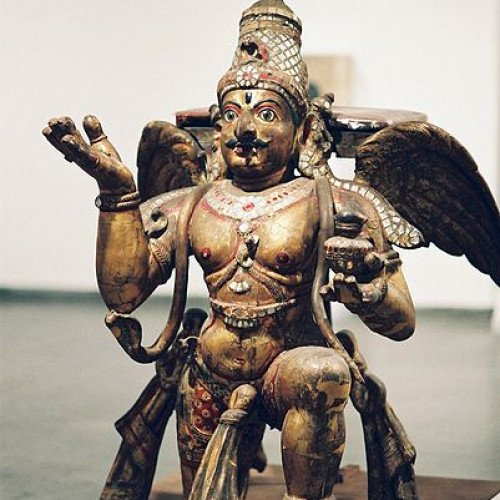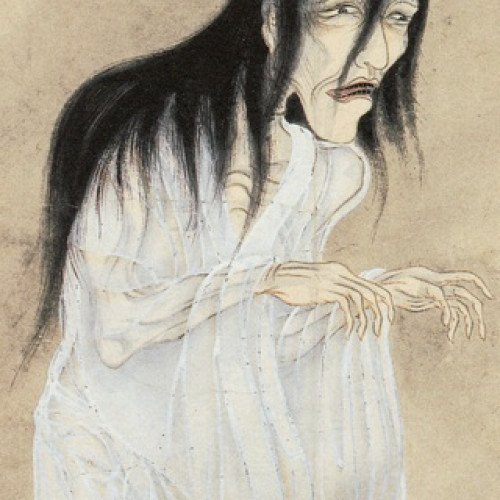Garuda VS Ghost

Garuda
Garuda (Sanskrit: गरुड Garuḍa; Pāli: गरुळ Garuḷa) is a legendary bird or bird-like creature in Hindu, Buddhist and Jain faith. He is variously the vehicle mount (vahana) of the Hindu god Vishnu, a dharma-protector and Astasena in Buddhism, and the Yaksha of the Jain Tirthankara Shantinatha. The Brahminy kite is considered as the contemporary representation of Garuda. Garuda is described as the king of birds and a kite-like figure. He is shown either in zoomorphic form (giant bird with partially open wings) or an anthropomorphic form (man with wings and some bird features). Garuda is generally a protector with the power to swiftly go anywhere, ever watchful and an enemy of the serpent. He is also known as Tarkshya and Vynateya.Garuda is a part of state insignia in India, Myanmar, Thailand, Cambodia and Indonesia. The Indonesian official coat of arms is centered on the Garuda. The national emblem of Indonesia is called Garuda Pancasila. The Indian Air Force also uses the Garuda in their coat of arms and named their special operations unit after it as Garud Commando Force. It is often associated with the greater adjutant (Leptoptilos dubius) stork.
Statistics for this Xoptio

Ghost
In folklore, a ghost is the soul or spirit of a dead person or animal that can appear to the living. In ghostlore, descriptions of ghosts vary widely from an invisible presence to translucent or barely visible wispy shapes, to realistic, lifelike forms. The deliberate attempt to contact the spirit of a deceased person is known as necromancy, or in spiritism as a séance. Other terms associated with it are apparition, haunt, phantom, poltergeist, shade, specter or spectre, spirit, spook, and wraith. The belief in the existence of an afterlife, as well as manifestations of the spirits of the dead, is widespread, dating back to animism or ancestor worship in pre-literate cultures. Certain religious practices—funeral rites, exorcisms, and some practices of spiritualism and ritual magic—are specifically designed to rest the spirits of the dead. Ghosts are generally described as solitary, human-like essences, though stories of ghostly armies and the ghosts of animals rather than humans have also been recounted. They are believed to haunt particular locations, objects, or people they were associated with in life. According to a 2009 study by the Pew Research Center, 18% of Americans say they have seen a ghost.The overwhelming consensus of science is that there is no proof that ghosts exist. Their existence is impossible to falsify, and ghost hunting has been classified as pseudoscience. Despite centuries of investigation, there is no scientific evidence that any location is inhabited by spirits of the dead. Historically, certain toxic and psychoactive plants (such as datura and hyoscyamus niger), whose use has long been associated with necromancy and the underworld, have been shown to contain anticholinergic compounds that are pharmacologically linked to dementia (specifically DLB) as well as histological patterns of neurodegeneration. Recent research has indicated that ghost sightings may be related to degenerative brain diseases such as Alzheimer's disease. Common prescription medication and over-the-counter drugs (such as sleep aids) may also, in rare instances, cause ghost-like hallucinations, particularly zolpidem and diphenhydramine. Older reports linked carbon monoxide poisoning to ghost-like hallucinations.In folklore studies, ghosts fall within the motif index designation E200-E599 ("Ghosts and other revenants").